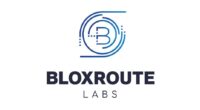Photo Cred To Rubin Group Via Flickr
Massive loans are being initiated on the ethereum blockchain as of now. According to recent reports, the fifth-largest loan position in the MakerDAO network minted 1,000,000 new DAI tokens, and the transaction fee on the loan which is estimated at about $996,216 was a mere 73 cents. More interestingly, this is not a first-time occurrence.
Collateralized Loan Obligations
The first loan allotting 1 million new DAI stablecoins happened in late June by the seventh-largest collateralized debt position (CDP) in the MakerDAO network. Collateralized debt positions are basically systematic loans acquired by users who put in holdings of ether (ETH) to take out ensuing holdings of DAI from the MakerDAO network.
The institution supporting the network has revealed that the current pick-up in Ethereum prices is causing large loans to be more widespread. According to the head of proprietary trading at the MakerDAO Foundation- Joe Quintilian- in an interview, it would not be surprising to get a $3 million mint by end of the year, as minting high dollar amounts has been bit by bit increasing over the past year. The over-all amount of DAI now holds at about 91 million and may rapidly surpass a record high of 95 million. But then again – with a debt top limit of 100 million DAI presently in place – the growth is very likely to come with possible consequences.
DAI Crypto
The creator of DAI analytics site- mkr.tools- Michael McDonald, is of the opinion that DAI supply will keep growing, even as markets stay bullish. He revealed that If the DAI supply starts hitting as high as 100 million and individuals still want take-out more DAI, the stability fee might really have to be increased, and that It all hinges on what the authority decides to be about that.
To back-track for a bit, the MakerDAO stability fee is basically an interest percentage that all users are mandated to pay back into the MakerDAO system as soon as they finish paying their DAI loans. The stability fee, which at this time is at 18.5 percent, is of utmost importance in averting excess demand and re-establishing DAI’s dollar estimation.
According to McDonald, resulting from the fact that the price of Ethereum has increased suggestively in the space of the past few months, collateralized debt positions are profoundly over-collateralized, so owners now feel comfortable drawing out more DAI against their ETH collateral. With regards to the bullish market inclination, McDonald is of the opinion that MakerDAO token holders may shortly have to contemplate on expanding the hard supply cap on DAI, which is currently pegged at 100 million. He adds that this is all dependent on when multi-collateral DAI is introduced into the MakerDAO network.
Employing multi-collateral DAI, users will be allowed to mint new DAI tokens by locking assets of other cryptocurrencies beyond just Ethereum. Each cryptocurrency will have its own exclusive supply cap, called a debt ceiling, which guarantees adequate divergence of assets backing DAI’s value. McDonald revealed that if multi-collateral DAI is not going to launch until the fourth quarter of the year, then raising the debt ceiling to allow for some amount of growth in the meantime will be a fantastic approach. But in the end, this choice – like the ones to increase the stability fee – is in the hands of the voters of the MakerDAO system, those who hold MKR governance tokens.
Notice: Information contained herein is not and should not be construed as an offer, solicitation, or recommendation to buy or sell securities. The information has been obtained from sources we believe to be reliable; however no guarantee is made or implied with respect to its accuracy, timeliness, or completeness. Authors may own the crypto currency they discuss. The information and content are subject to change without notice. Visionary Financial and its affiliates do not provide investment, tax, legal or accounting advice. This material has been prepared for informational purposes only and is the opinion of the author, and is not intended to provide, and should not be relied on for, investment, tax, legal, accounting advice. You should consult your own investment, tax, legal and accounting advisors before engaging in any transaction. Please also visit our Privacy policy; disclaimer; and terms and condition page for further information.

